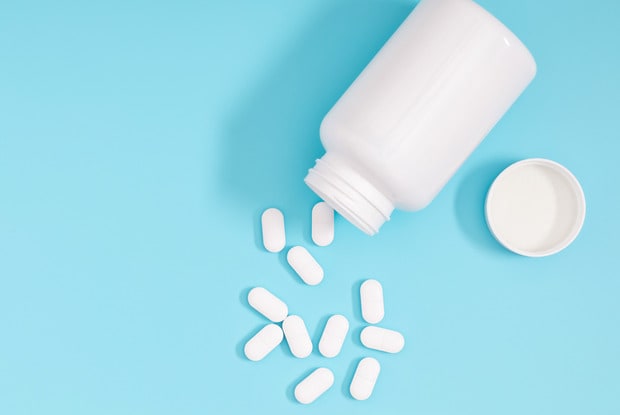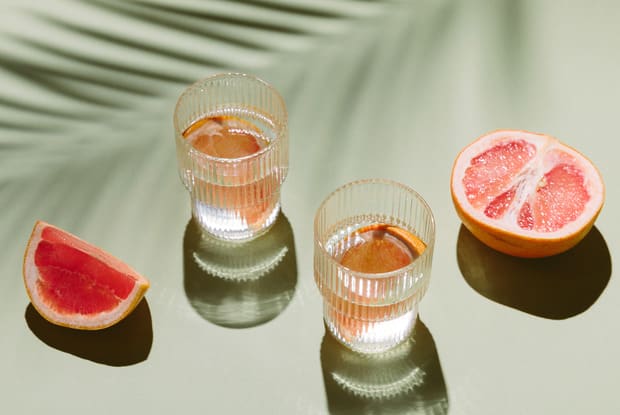Table of Contents
III. Xifaxan for Traveler’s Diarrhea
IV. Xifaxan for Hepatic Encephalopathy
VI. Foods to Avoid While Taking Xifaxan
Xifaxan is a prescription antibiotic used to treat irritable bowel syndrome with diarrhea (IBS-D), traveler’s diarrhea, and hepatic encephalopathy (HE). The active ingredient in Xifaxan is rifaximin. Rifaximin is not absorbed into the bloodstream but stays in the gut to prevent bacterial overgrowth. Brand-name and generic Xifaxan is available through an online Canadian pharmacy such as MyDrugCenter. When taken properly, generic Xifaxan can relieve diarrhea and other symptoms of an E. coli infection. Read on to learn about Xifaxan’s dosage strengths and how to use it for each condition.
Xifaxan Dosage
MyDrugCenter carries three dosage strengths of generic Xifaxan: 200 mg, 400 mg, and 550 mg. Your dosage will depend on the condition being treated, the condition’s severity, and any underlying disease that may be present. Your dosage will also account for other medications that may interfere with Xifaxan’s efficacy. It is important to take Xifaxan exactly as directed and avoid overdosing. If you take more than prescribed, your risk of developing drug-resistant bacteria significantly increases.

Xifaxan for IBS
IBS-D is a common large intestine disorder that can cause abdominal pain and cramping. This condition is rarely severe, but some may need Xifaxan to control symptoms. If you experience diarrhea at night, rectal bleeding, or difficulty swallowing, you may have IBS-D and should see a doctor for a proper diagnosis. To treat IBS-D, the recommended treatment period with Xifaxan is 14 days. During this time, patients are usually prescribed one 550 mg tablet three times a day. If symptoms persist after one round of treatment, your doctor may treat you again with the same dosage strength up to two times. [1]
Xifaxan for Traveler’s Diarrhea
Traveler’s diarrhea involves loose stools and stomach cramps caused by a bacterial infection. It typically occurs after the consumption of contaminated food or water. Most people who get traveler’s diarrhea see their symptoms improve by themselves. However, Xifaxan can be used to stop the bacterial infection from spreading to improve symptoms. The recommended dose of Xifaxan for traveler’s diarrhea is one 200 mg pill taken three times a day for three days. In clinical trials, Xifaxan was shown to be effective for preventing traveler’s diarrhea as well. The prophylactic use of Xifaxan may be especially important for patients at risk of severe diarrhea. [2]

Xifaxan for Hepatic Encephalopathy
Hepatic encephalopathy (HE) is a condition involving a toxic buildup that affects brain function. It can occur when harmful bacteria in the stomach create toxins that the liver is unable to expel. Hepatic encephalopathy is common in patients who have impaired liver function. Xifaxan does not treat liver damage, but it can improve symptoms of brain decline by reducing harmful bacteria from creating toxins. To treat HE, Xifaxan 550 mg is recommended twice a day. Patients with HE may require Xifaxan while treating the underlying liver condition. [3]
Xifaxan for SIBO
Doctors may prescribe Xifaxan as an off-label use for treating small intestine bacterial overgrowth (SIBO). A review of clinical trials shows that Xifaxan successfully treated SIBO in 84 percent of patients. Symptom relief lasted up to 10 weeks after the initial treatment period. Xifaxan also causes fewer side effects compared to metronidazole and levofloxacin. With high effectiveness and a better safety profile, Xifaxan is a popular choice for treating SIBO. [4] Depending on your condition, your doctor may prescribe 600 mg, 800 mg, or 1200 mg of rifaximin per day to treat SIBO. [5]

Foods to Avoid While Taking Xifaxan
When taking your Xifaxan medication, avoid eating grapefruits or drinking grapefruit juice. Grapefruits are known to increase the amount of rifaximin in your body, leading to increased Xifaxan side effects. Grapefruits can cause adverse effects by inhibiting certain liver enzymes from breaking down rifaximin. Most other foods do not have this effect, but you may want to check with your doctor if you are unsure whether a particular food may cause complications.
Xifaxan has few food interactions, but several drugs are known to affect Xifaxan’s safety. Talk to your doctor about your current medications before starting Xifaxan to prevent drug interactions. Common drug interactions of rifaximin include:
- Warfarin
- P-glycoprotein inhibitors
- CYP3A4 substrates [6]
Like other antibiotics, taking Xifaxan properly is important to ensure it works safely and effectively. For more information on treating symptoms of a bacterial infection, read the Xifaxan articles in our blog section.
DISCLAIMER: The information in the article is not meant to be used for treatment or diagnosis. It is designed for general awareness and for information purposes only. Always consult a medical professional for your specific healthcare needs.
